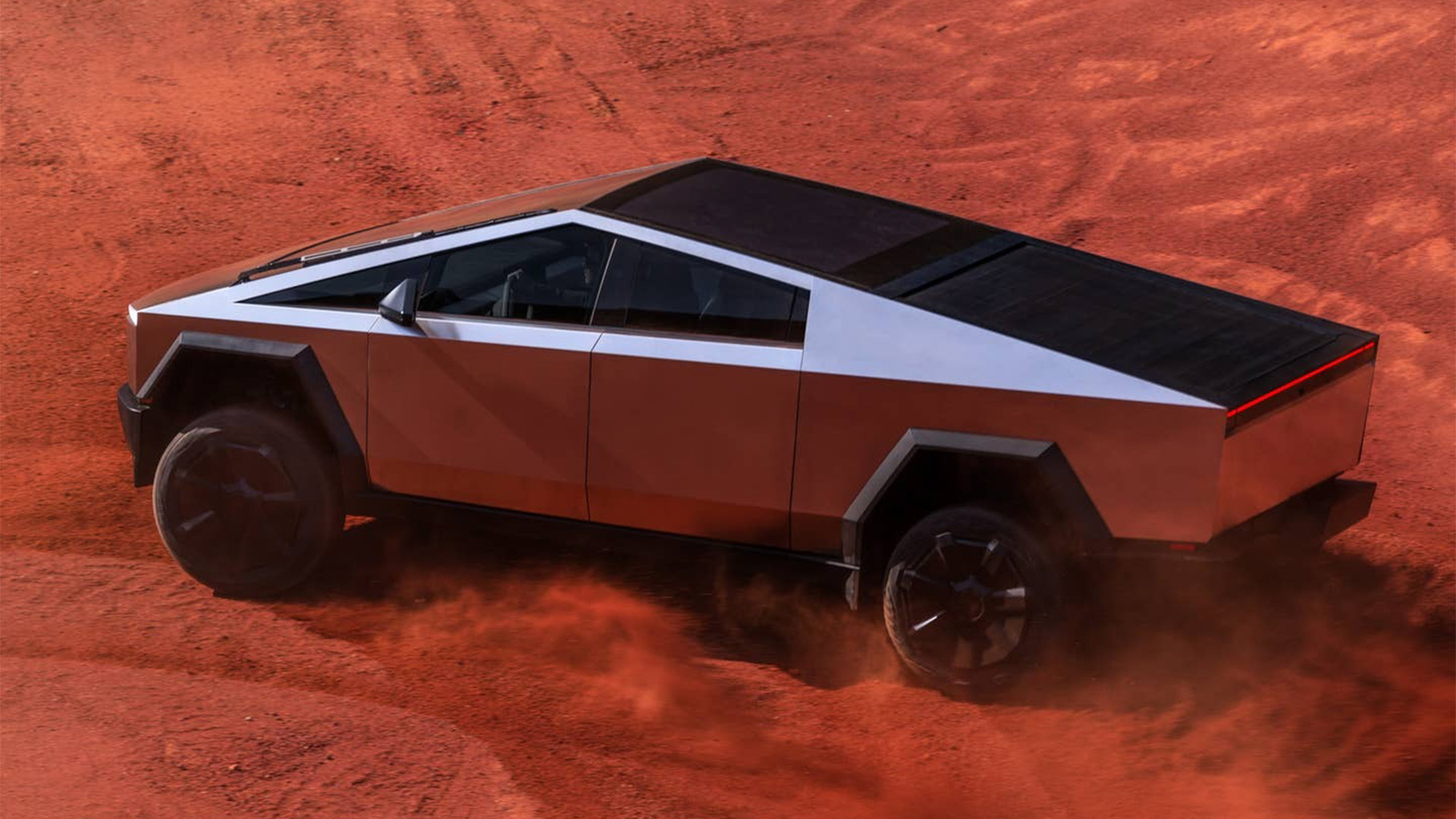

Not long after the Tesla Cybertruck launched, owners began reporting corrosion spots on their trucks’ stainless steel bodies. With no official explanation, the rusty-looking dots snowballed into a debacle that has been covered by major mainstream media outlets. Now, Tesla has finally responded, casting doubts onto reports of rust spots—though at least one owner indicates the issue hasn’t been put to bed.
The rust reports began earlier this year with posts on social media and Tesla owner forums, showing small reddish-brown dots on the surface of Cybertrucks’ bodies. The community attributed these blemishes to fine iron particles scattered on the vehicles during manufacturing or shipping. The phenomenon isn’t unique to the Cybertruck, but it is one highlighted by its reflective steel body. At the time, we spoke to an affected owner and elected not to report on the trend as owners had identified a remedy. Since then, however, a Tesla official has endorsed the community’s bandaid fix, even though it doesn’t seem to work perfectly.
“It’s surface contamination only and can be cleaned off easily,” tweeted Wes Morrill, lead engineer for the Cybertruck. “Bar Keeper’s Friend used here works well, citrisurf77 can also loosen the deposit and simply wipe it off. If anything stubborn use a blue non-scratch Scotch Brite pad as it won’t leave any marks on the metal.”
But the widely recommended cleaning product may not be a perfect solution. Many owners have reported using the cleaner successfully, but CybertruckOwnersClub.com user Raxar, whose original post kicked off the news cycle, wasn’t so lucky.
“I used BKF for the spots on my Cybertruck and it seemed like at first they went away but I am noticing they’re still there now the next day, really weird,” Raxar said in the post linked above. Another user, vertigo3pc, reported they were told by a Tesla service center that the spots were corrosion and that Tesla even has an official procedure to service it.
“I’ll be honest: I think Tesla is selling and delivering these cars before they were prepared for it,” vertigo3pc said. “I do think it’s rail dust or outside contaminants, I just don’t think Tesla told the delivery centers how to properly clean the CT before delivery.”


Due to the corrosion resistance of stainless steel, it’s highly unlikely these rust spots—regardless of source—will rapidly compromise the body. However, they’re still embarrassing for Tesla, which acknowledges the body’s sensitivity to corrosion in the owners’ manual. Tesla advises Cybertruck owners to “immediately” clean the bodies of their trucks of “corrosive” materials encountered in everyday driving conditions, such as the oils in skin.
Whether or not the corrosion we’re seeing is just material scattered on the surface or in the body isn’t the point though, because it’s not why this subject has caught the public’s attention. It’s because Tesla used a body material that it knew was prone to visible deterioration, and now owners are driving around in trucks that are easily stained and need specialty cleaning products to maintain.

Car enthusiasts aren’t strangers to such specialty cleaning products, but they contrast with the reasoning behind using stainless steel in the first place: It’s not supposed to need this kind of maintenance. Cybertruck fans love to boast of the body’s resistance to corrosion, but it clearly isn’t holding up the way a Ford F-150 with a painted aluminum body does—and it’s heavier to boot. The fact that there’s so much discussion about keeping Cybertrucks shiny shows it’s gotten under owners’ skin, too.
While there are a handful of owners that look forward to the “patina” that age will give their untreated trucks, most expected a glossy bulletproof finish and the I-told-you-so of what they thought was a paradigm shift in pickup development. Instead, they’re getting stained steel that may as well be egg on their face. Can’t say we didn’t warn them.
Got a tip or question for the author? You can reach them here: james@thedrive.com